Irrigation optimization
Mark Krasnow, Allison Haywood and Danielle McMillan
Most grape growers in New Zealand irrigate during the season to supplement natural rainfall and ensure adequate growth and productivity of their vines. Depending on the soil and the season, the amount of irrigation necessary can be substantial. When, and how much, to irrigate are important considerations for growers to minimise waste and maximise production and quality.
The 2018-19 season was very different for Hawke’s Bay and Marlborough. In Hawke’s Bay, rainfall was well above normal (546 mm of in season rain versus the long-term average of 438 mm). Marlborough received close to its normal in season rain (363 mm versus a long-term average of 385 mm). However, what was unusual in Marlborough was that the rain fell mostly in the early season. There was about a six-week period where very little rain fell between early January and late February, which coincided with hot and windy conditions—a situation that put vines at risk of losing crop due to severe water stress. This phenomenon underscored the need for water storage dams, as those without water storage were left high and dry when river draws were cut off (Figure 1). While the 2018-19 season was extreme for Marlborough if we compare it to historical records, climate change scenarios predict that this type of weather pattern will become more frequent in our wine regions moving forward (www.niwa.co.nz), and we need to be prepared to act to mitigate this.
Even with storage dams, it is important during long droughts to irrigate only when vines need it so as to make sure the stored water is enough to get the vines through until river or aquifer draws are able to fill the dam again. If this prolonged drought is the new normal, as climate change scenarios suggest, even growers with water storage will need ways to reduce irrigation so that their dams do not run dry and put vines at risk during droughts.
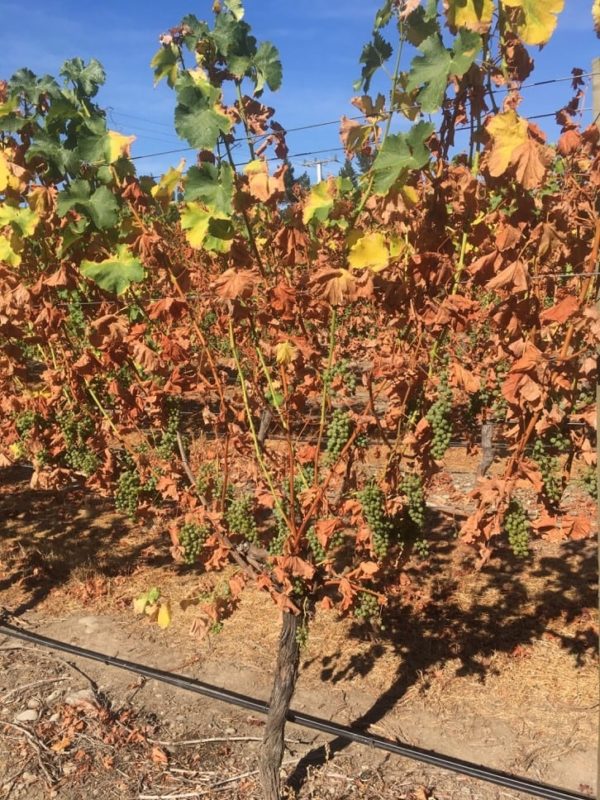
Figure 1: Vines left without irrigation water during the hot, dry weather in February 2019 suffered severe water stress, causing leaf abscission. This vineyard could not be harvested.
A study started in the 2017-18 season is looking at dramatically reducing water used in vineyards. Irrigation as normal based on soil probe or visual inspection of vines was compared with irrigation using a pressure chamber to irrigate vines only when they need it, as determined by measuring midday stem water potential. This regulated deficit irrigation (RDI) treatment employed infrequent, but long irrigations (8-12 hours), compared with the standard of frequent, short waterings (1-2 hours). Some of the trial vineyards in 2018-19 were cut off from water, however all vineyards were able to harvest a crop at adequate ripeness for winemaking. This article will only address the vineyards that had an uninterrupted water supply, and that were able to adhere to the irrigation protocol for the entire season.
For white wines (Sauvignon blanc and Chardonnay) irrigation thresholds were set up to try to ensure no loss in productivity, but to use less water than currently. Vines were kept well-watered during canopy and early fruit development. After veriason, vines were brought near stress (down to -0.9 MPa) to stop continued canopy growth, but watered before they got to a point that would dramatically slow photosynthesis. Employing RDI in vineyards can therefore lead to lower farming costs due to less need to trim and hedge vines in addition to lower pumping costs for water.
For the Pinot noir and Merlot, after set, vines were not irrigated until they got to moderate stress (-1.2 MPa). The aim being to reduce photosynthesis that fuels fruit cell division, thus leading to smaller berries. The aim was to increase red wine quality and reduce faming costs for pumping water, trimming, and crop thinning simply by giving the vines less water.
The bunch number, yield per vine, rot severity, and water used for each vineyard are shown in Table 1. This being the second year of this trial, there was no evidence of the RDI treatment last season reducing vine fertility this season, as shown by the similar bunch number between the RDI and control in all vineyards. As can easily be seen, the use of the pressure chamber for regulated deficit irrigation reduced the amount of water used in each vineyard, often substantially. In no vineyard was yield significantly reduced due to deficit irrigation, even in the red wines where this reduction was sought. There was an increase in rot severity in the RDI treatment at one Hawke’s Bay Merlot site, but rot was not significantly affected in any other vineyard.
Overall this data shows that employing RDI generally does not negatively affect productivity of vines or the health of the fruit, but does dramatically reduce water use. In the Marlborough Sauvignon blanc and Pinot noir 1 vineyards one fewer trimming pass was needed in the RDI treatment, showing a tangible economic/labour benefit to more careful water use.
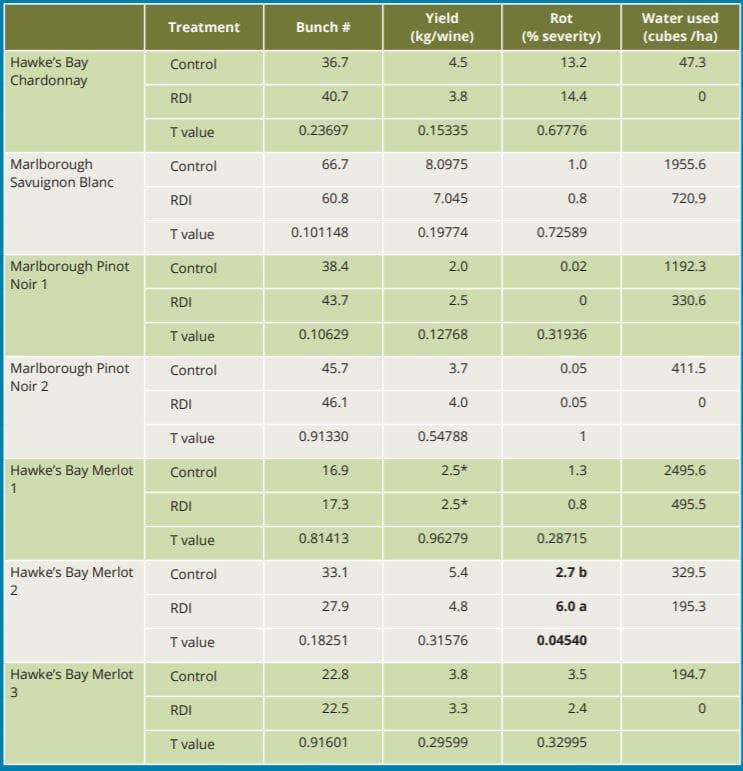
Table 1: Yield components (bunch number and yield per vine), rot severity, and water used for the trial vineyards. Values in bold with different lower-case letters from the same vineyard denote significant differences at the p=0.05 level. *Crop thinning was inadvertently carried out in both the control and RDI at Hawke’s Bay Merlot 2 vineyard.
No significant differences in berry weight or Brix were seen in Sauvignon blanc in Marlborough (Figure 2), though the RDI fruit tended to be smaller and of higher Brix at any sampling date. In Chardonnay in Hawke’s Bay, there was a significant reduction in berry weight and an increase in Brix due to RDI early to mid-season, but at harvest berry weight and Brix were not significantly different between the control and the RDI (Figure 3).
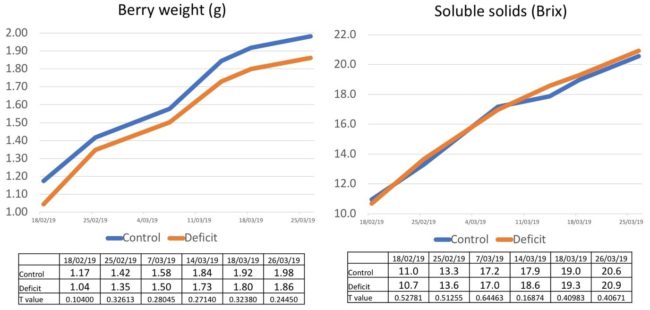
Figure 2: Berry weight and Brix for the Marlborough Sauvignon blanc vineyard.
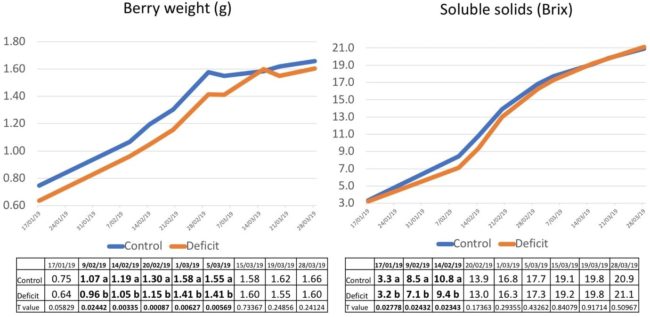
Figure 3: Berry weight and Brix for the Hawke’s Bay Chardonnay vineyard. Values in bold with different lower-case letters from the same date denote significant differences at the p=0.05 level.
RDI affected both berry weight and Brix in red grapes in both Hawke’s Bay and Marlborough. In the Marlborough Pinot noir, where water potential differences were more extreme between the treatments, there was a significant difference in both berry weight and Brix at every sampling point (Figure 4). RDI led to smaller berries with higher Brix. The Merlot in Hawke’s Bay showed the same trend, but significant differences between treatments were only seen early season, and by harvest there were no significant differences (Figure 5).
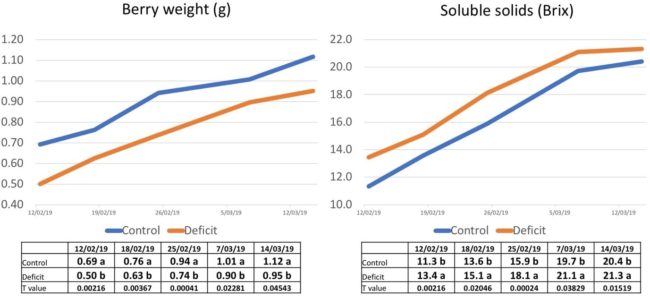
Figure 4: Berry weight and Brix for the Marlborough Pinot noir 1 vineyard. Values in bold with different lower-case letters from the same date denote significant differences at the p=0.05 level.
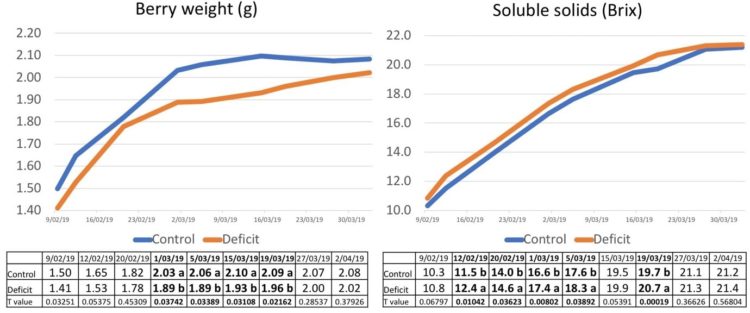
Figure 5: Berry weight and Brix for the Hawke’s Bay Merlot 3 vineyard. Values in bold with different lower-case letters from the same date denote significant differences at the p=0.05 level.
It is a bit surprising to see such large differences in berry size, especially in the Marlborough Pinot noir 1 vineyard, without a decrease in yield (Table 1). This can partially be explained by the higher bunch number from the RDI vines, but also due to the large vine-to-vine variation in yield. However, it is anticipated that the smaller berries produced by RDI, with their greater skin-to-pulp ratio, will lead to higher quality red wines from the RDI treatment. Wines from the project are currently in progress, and sensory analysis of the whites will begin shortly, with reds to be analysed later in the year.
The data from the second year of this trial suggests that, assuming vineyards have an uninterrupted water supply, RDI can be employed year-on-year with no loss in yield or fruit quality in white wines. In reds RDI can be employed to generate smaller berries with higher Brix than the control, both of which will likely benefit wine quality. The water saving that can be actualised by employing RDI is substantial, and can benefit vineyards in that they need to pump less water, build smaller dams, and do less work in the vineyard.
It must be noted that not all vineyards in the study had uninterrupted water supply, and those that were cut off or dramatically reduced in their irrigation capacity got very stressed, lost leaves, and had substantially reduced yield. This underscores the fact that many vineyards in New Zealand absolutely need irrigation if the season is abnormally hot and dry, as many climate change scenarios predict for our wine regions. River and aquifer draws are not guaranteed, and if a grower wishes to future-proof their vineyard, water storage is an absolute necessity, however the size of the dam needed will depend on the water needs of the vineyard based on variety and soil type.
RDI can reduce the amount of water needed to be drawn from rivers, thus potentially staving off or delaying regional river cutoffs, and, when they do happen, it can help stretch out how long stored water can last. We as an industry need to both reduce our water drawn from rivers and aquifers and create water storage to ensure the vitality of our industry. RDI is a valuable tool for growers to employ moving forward to increase the water sustainability of our industry and to increase our resilience in the face of a changing climate.
This article first appeared in the October/November 2019 issue of New Zealand Winegrower magazine

















